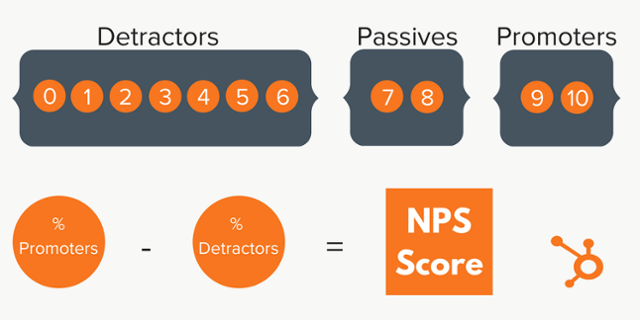Gone are the days of Mad Men, when marketers and advertisers had to guess what was working. In 2021, we live in the age of Big Data and that means everything is trackable.
Now the question becomes since everything is quantifiable, what should we be watching? User engagement metrics have become a big part of measuring success in a digital world, but what metrics truly matter?
In this article, we are going to walk you through the customer engagement metrics that you need to be measuring. While we will mainly be talking about mobile app analytics, the same rules and strategies can be applied to more than just mobile apps.
There are so many out there that it can often be hard to choose what to track. It can also be difficult to understand what a metric is telling you about your users.
Not anymore. After reading this, you should be able to collect and analyze the metrics you need for success. Let’s get started.
The 7 Crucial User Engagement Metrics You Need To Measure
Here are the seven important customer engagement metrics that you need to measure now:
1. Users
Users are an important part of any metric, but users themselves can tell a story. There are several ways to track users, such as MAU (monthly active users), WAU (weekly active users), and DAU (daily active users). You can also measure stickiness, which is defined as DAU/MAU.
Another way to divide users into helpful metrics is through segmentation. You can break them up by their demographics, what device they used, their age, and plenty of others.
Understanding how certain users interact with your service or platform compared to others can give you insights into potential areas of opportunity.
Some of the things you can learn from these user engagement metrics are:
- User base, usage trends, and what users love or hate about your app.
- What areas to improve on.
- Highlighting areas in which bottlenecks occur or that could use restructuring.
- Take a closer look at user drop-offs through segmentation.
Engage with users better than ever with SMS marketing. See how!
2. Session length
Session length is the amount of time that a user spends in your app in one session. During a session, users typically perform a series of different actions and then either exit or the session times out. Session length is a customer engagement metric.
There are a few things we can learn from session length, such as segmenting users to help identify which of them stay in the app longest and seem most engaged. This can help your marketing moving forward.
On the other hand, if it feels like no one is using the app for as long as you thought in the original design, you may need to speak with your development team.
Your developers can take these customer engagement metrics to discover where problems exist. For example, the checkout process might be too complicated, prompting users to exit a session early.
3. Session frequency
Session frequency or session interval is often confused with session length. However, session frequency is simply the time in between two consecutive sessions.
While session length shows you how engaged your users are while in the app, session frequency shows how often your users are coming back for more.
When monitoring session frequency, keep an eye out for trends in how people use your app. If they only use it during certain times of the day, ask why.
User engagement metrics are only as valuable as the questions you ask of them. Use the answers to guide your decision making,
4. Acquisitions
This user engagement metric determines which channels your users are originating from. Acquisitions can come from so many places, like organic search, direct, paid search, referral, social media, and countless others.
By figuring out where your downloads and interactions are coming from you will have a better idea of how to attract new users.
The acquisition can also help you calculate your customer acquisition cost, or what it takes as far as revenue goes to gain a new user. By understanding this metric, you can better plan your budget, sales, and marketing activities.
5. Retention Rate
Think of retention rate as the opposite of churn rate, in that it measures the percentage of users returning to your app in a given period of time. By calculating your retention rate over days, weeks, and months, you will have a good idea of the longevity of the app in the market.
Retention rates let you track and watch out for problem areas of your app that can be improved upon. It is a continuous process, so be sure to keep up to date to make sure you aren’t falling behind.
Additionally, apps on average retain only 40% of their initial users after a month. Use this as a benchmark for your own app. It also is important to keep in mind that acquisition costs are on the rise in the industry, so it will pay for you to focus on retaining users over going after new ones.
6. Time in-app
Again, different from session length, time in app shows the amount of time a user spends in your app in a given interval. Time in app is a user engagement metric that’s relatively easy to understand. T
he more time users spend in your app, the more engaged they are, the better they like your app. Simple as that.
However, if you do want to take a deeper look, segmenting here can be of great value. For instance, there may be a group of users that has not been spending much time in the app for one reason or another.
Ask questions of them and your development team to find out what’s causing this and decide if it’s worth fixing or will pan out on its own.
7. Screen flow
Screen flow allows you to see exactly how your user interacts with your app. Of all the user engagement metrics you should be tracking, screen flow is one of the most important.
While other metrics simple allows you to see how much time was spent in your app, screen flow will show you exactly when and where the user exited the session.
You should use screen flow as a way to evaluate the strengths and weaknesses of each page or screen of your app. If for instance, you see one area that is really struggling, it may be worth either eliminating or reworking. The same goes for entire processes that are triggering users to leave the app.
A Few More Essential User Engagement Metrics to Measure
Social Media Listening Metrics
This marketing metric helps you track positive and negative mentions on social media. It helps you see what people are saying about your brand. This can be measured across platforms like Facebook, Instagram, and Twitter.
Use social media feedback to see:
- What are people most satisfied with?
- What are people least satisfied with?
- What topics are people asking about?
- What time of day are people most active on social media?
Activity churn rate
This is the percentage of customers who have stopped using what you sell, i.e., your product or service. This is a vital customer metric that can impact your revenue. It will also tell you how much more customers you’ll need to acquire to compensate for the loss.
Churn rate % = (No. customers who stopped using your product or service / Total no. of active customers at the beginning of the period) x 100
Conversion rate
One of the most popular marketing metrics is conversion rate. This is the percentage of people who have completed an action directly tied to your campaign goal.
Conversion goals are specific to your campaign. Examples include:
- Filling in a sign-up form
- Signing up for your business email newsletter
- Downloading a whitepaper from your website
Conversion rate % = (Total no. of conversions / Total no. of visitor sessions) x 100
NPS & CSAT
Net Promoter Score (NPS) is the score related to how people rate your product or service. Here’s how to calculate this customer experience metric:
- Survey customers to see how likely they are to recommend your company on a scale of 1-10.
- Organize customer responses into the following groups:
- Detractors (0-6)
- Passives (7-8)
- Promoters (9-10)
NPS = % Promoters – % Detractors

Source: HubSpot
CSAT refers to the customer satisfaction score people give for your services.
Bounce rate
Bounce rate is a customer engagement metric that calculates the percentage of visitors who exit the site after viewing only one page. In other words, they “bounce” away from that site and continue browsing elsewhere.
Bounce rate helps businesses understand how good their web content is – because if many people bounce after seeing one page – chances are they’re not impressed with your content.
View your bounce rate from Google Analytics.
Put it all together
As valuable as each of these user engagement metrics is on its own, none of them exist in a vacuum. In order to truly understand your users, how they think, and which areas to improve or change, you need to look at all of these metrics together.
For example, screen flow is an important metric, but without knowing how long each of the users spent in each area, you are stumbling in the dark.
Use each of these different user engagement metrics together to become a powerhouse in your industry. All of them are there before you, but in the end, it’s up to you to do something with them.
Get the full story here:





